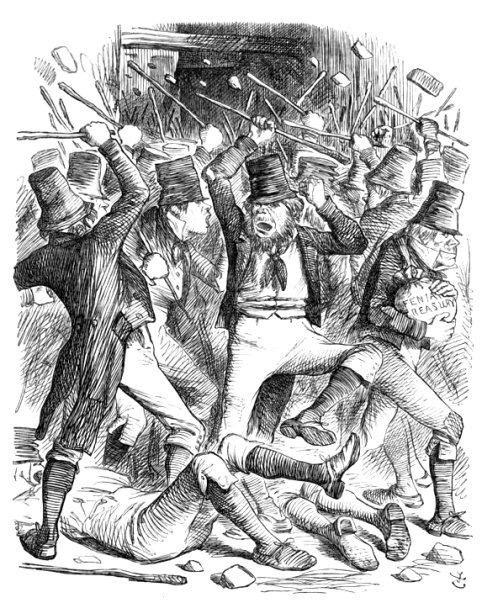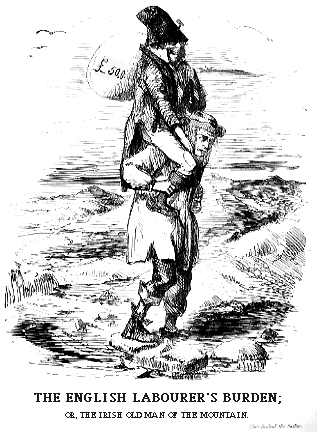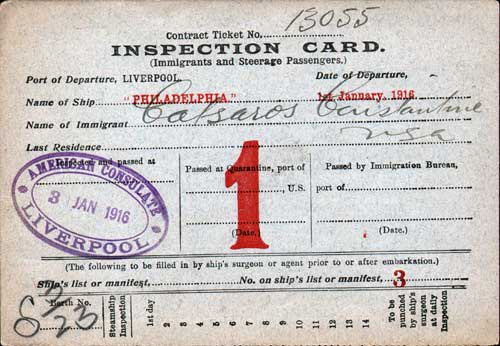#and the revolution depicted here is much more grounded and radical than a lot of white-authored sff revolutions
Explore tagged Tumblr posts
Text

2023 reads / storygraph
The Free People’s Village
sci-fi set in an alternate 2020, where Gore was elected and declared a War on Climate Change rather than a War on Terror - but otherwise not much is different, capitalism still reigns and benefits the white and privileged while criminalizing marginalised - especially Black and Indigenous - people
follows a young queer white woman who’s the guitarist in a punk band at a warehouse-turned-housing-and-venue, and who teaches at a predominantly Black school
when she learns that The Lab is going to be torn down for a new electromagnetic hyperway, she gets involved in the movement to stop it - at first just to keep her band, but she gets more involved as she reckons with her privilege and her own anti-racist journey as The Lab becomes the centre of an anti-capitalist revolution during a time of increasing political unrest
#The Free People’s Village#sim kern#aroaessidhe 2023 reads#I thought this was okay - interesting premise; some great characters and important conversations#It is definitely a clueless-white-cis-lady-becomes-a-bit-less-clueless kind of story and I think I’d recommend it to fellow white people#but I don’t think non-white reviewers would enjoy this very much. especially the first third or so#with her unconscious racism and bumbling through...a lot of things#But I understand that her being like that is a way to have these discussions in the narrative which ultimately are important conversations#and the revolution depicted here is much more grounded and radical than a lot of white-authored sff revolutions#other than that - the structure was a little strange and sometimes it leaned into the Hey Guys This Is An Alternate Timeline a smidge too#much haha. and also damn pretty depressing in parts. but I guess realistic.#also: the author has gotten increasingly weird in the time since i read this so uhhhh yeah not sure i would support them anymore
6 notes
·
View notes
Text
Sarah Rogers pt 2: or, how baby!Steve imbibed a fuck-you attitude with his mother’s milk
Okay, so after looking at Sarah’s backstory, how she met Joseph and had Steve and decided to go to America, I couldn’t stop thinking about: what next? The MCU wiki is VERY thin on the ground with detail, and she’s so interesting! Plus, this is, like, one of the most criminally underdeveloped sources for Steve Rogers’ character, as I mentioned in pt 1. So, what can we reasonably source from the time to fill in the gaps?
So: I said in my previous post Sarah likely arrives in January/February of 1918. This is because in those days, travel times were long, conditions were VERY poor and you did not want to be heavily pregnant on a cheap ship to America with the conditions on board. Plus, in those days there was no guarantee a ship company would even sell you a ticket if you were visibly pregnant. It did happen, but was risky for the company, so you could never be sure. Sarah would have left asap once she made a decision.
The journey itself would have taken about 3-4 weeks. First she would have had to travel to London, because nothing would have been leaving to America from the French or Belgian coastline, as a) most of it was too close to the war and b) the bits that weren’t wouldn’t have been profitable. Travel to London from Passchendaele would have taken a few days to a week, given the mud and absolute priority troops and military materials were given on all journeys. This map here shows it took between 7-10 days to arrive in New York from London (by ship, no flights until the late 1920s/1930s) in 1914 before the outbreak of the war. I mentioned how at this point the German U-boats were basically sinking anything they found not flying a German flag, which made this journey pretty hazardous, even with the newly introduced (and very effective) protection of the convoy system. If Sarah was travelling on a fast convoy (less likely as they were primarily for troop ships) it would have taken about a week. Slower moving convoys carrying mostly cargo might have taken 2 weeks, even 2 and a half weeks if the weather was bad. Convoys, by the way, were where groups of ships were clustered together and escorted across the Atlantic by a combination of naval ships bristling with every explosive known to man, and navy ships disguised to look like harmless merchant cargo ships but ALSO bristling with every explosive known to man, to prevent U-boats sinking them. And also attack U-boats when they turned up. Not if. When. As you may be imagining, these journeys often contained lots of Things Going Boom and people Dying in Unpleasant Ways. Sarah would have been told by literally everyone she knew that this was a stupid, near-lethal decision, and that she should just NOT. But Sarah being Sarah, ignored this in the pursuit of what she felt was right and best for her and her baby... that doesn’t sound familiar at all, does it?
Okay, so she’s made it through the journey to the iconic Ellis Island. The next problem was that Immigration to the USA was incredibly curtailed by 1918, compared to the levels of immigration to the US prior to WWI beginning. In this, Sarah was lucky. Prior to WWI, on average between 1900-1914 about 1 million immigrants arrived into the US each year. In 1918, roughly 110,000 did - Sarah being one of them. I’ve said before that she would have had an easier time getting passage on a ship in the first place because she was comparatively better off on a nurse’s wage and was a middle class professional. More than that, most travel was reserved for the military - and Sarah likely had connections, being the wife of an American soldier, which made it easier for her to gain passage on a ship. (More on this later.)
Her status and profession is also very important for explaining how Sarah gained entry to the US, because by the end of WWI, the open door policy of the 19th and early 20th century had been solidly shut. The open-door policy had essentially allowed anyone who could pass a very basic medical and legal check free entry to reside in the USA, and the Ellis Island museum has a very good description of just how cursory these checks were - they were nicknamed the ‘six second physicals’. 98% of immigrants passed straight away, and a only a very small percentage of the remainder were put on a ship back to their country of origin. But by the outbreak of WWI, politicians and the public had become uneasy about this. Mostly due to racial concerns - Chinese immigration was the first to be restricted in 1882 with the Chinese Exclusion Act. Japanese immigrants were targeted in 1907 and all Asian immigrants in 1917. (I see a lot of posts on tumblr talking about how immigration restrictions in the US began by denying Jewish refugees entry in the 1930s, which... is wrong. So, so wrong. But anyway.) Here is a contemporary cartoon showing a pretty good summary of attitudes to immigration by the time Sarah would have been travelling:

(The 3% refers to immigration restrictions put in place by Congress AFTER the war, btw.)
But the US wasn’t just worried about one continent’s people! Or even ‘just’ non-whites! Oh no... they were also VERY worried about the ‘wrong sort’ of white immigrant too. Namely, anyone from southern and eastern Europe, and the Irish.
The discrimination against the Irish is an interesting one, because on the face of it, the Irish were the kind of immigrants the US wanted - north and western Europeans. But here’s where eugenics and pseudoscience come along and fuck things up for a lot of people. Part of the reason why the US was suspicious of southern and eastern Europeans was political - that they harboured a tendency towards violent revolutions, communism and anarchy. The Irish, after the violence of the 1916 Easter Rising and the fact that a not-insignificant number of violent revolutionaries tried to facilitate a German invasion of Ireland (and then unionists ran guns during the war through Kriegsmarine U-boat dropoffs on the Irish coast in... defence???? Idk either.), came to be included in this politically radical group. That’s the first strike.
The second strike came from the fact Irish had the British working against them. In those days, British media and culture really set the tone for the rest of the world. Remember, the US was not a world superpower yet - this is when Britain is at the height of its power, ruling 20% of the world’s people and 25% of its land surface by 1924. Britannia really did rule the waves, and much of the world’s culture, at this point. Hollywood, and American ‘soft power’ had yet to develop into the behemoth it is now. British culture persistently depicted the Irish as subhuman, ape-like, feckless, uncivilised and dangerous, as you can clearly see here:


The top one is from 1866, and the second one from 1849. Both were cartoons published in Punch Magazine, which was the pre-eminent social and political publication that EVERYONE read in the Victorian and Edwardian eras. It also played a huge role in shaping social attitudes, and you can see more of its, and others, views on the Irish in these excellent galleries. The rest of the British media was the same - almost universally negative views of the Irish, which filtered across the Atlantic over time. And seemed to be vindicated by events like the 1916 Easter Rising, and before that a long running number of secret societies the British kept discovering, plotting revolution against their rule. The whole ‘kiss me I’m Irish’, dying the Hudson green on St Patrick’s day, ‘omg I love an Irish accent’ thing? Didn’t happen until the latter half, or really the last quarter, of the twentieth century. The Irish were pretty much persona non grata when Sarah was alive. Part of the explanation for this came from the idea that the Irish were a part of a lesser race, their Celtic origins leading to a lack of judgement, predisposition to alcoholism and hotheadedness, and passionate outbursts which meant you needed to treat them more like children. Conveniently enough for the British, this explanation meant you didn’t need to treat your subjects like equals, deserving of the vote, or indeed with anything except violence and condescension. Ha. Funny that.
But anyway, back to America.
Third strike: the Irish were Catholic, as Sarah would have been. Only the very richest in society were Protestant, because they were descended from British settlers. Both the British and the US governments of the time viewed Catholicism with deep suspicion, partly for historical reasons (Martin Luther, 1517 and all that jazz) but ALSO because the Catholic Church remained a vastly powerful institution which could and did command the loyalties of people more than the national government, and this represented a dangerous fifth column within the nation state. Most of north and western Europe was Protestant, unlike the south and east which was predominantly Catholic (with the exception of France. But hey, they’re the French. No big.) so the Irish being 99% Catholic was yet another reason they got lumped in with the other ‘undesireables’.
Not a small part of this was caused by the fact that the Irish had been immigrating to America in vast numbers ever since the Great Famine (aka the Potato Famine/Blight) to the tune of and average of c450,000 Irish per decade between 1850-1900. That is... a LOT. Like, New York’s population in 1890 had only just hit 2.5 million! Ireland’s population TODAY is 5 million! So by the end of WWI, there was already a sense that Too Many Irish were here, particularly since the Irish tended, like most immigrant communities, to move into certain areas in large numbers via family groups and connections. Sarah would have been no exception to this, which I’ll explore more in pt 3 later. It was a very common practice in this period for a man to go to America and work, then bring his family and extended family over. Or for young relations to go and live with family already in America if there was no work in Ireland - which there wasn’t, the Irish economy being subsistence agriculture and not a lot else.
All of this together means that when Sarah arrives in Jan/Feb of 1918? She’d get a pretty rough welcome at Ellis Island (still used for incoming immigrants until new legislation establishing a visa system in 1924 went through and basically made it redundant.) and beyond.
Below is a pic of an Ellis Island arrival card, just because it’s cool:

These tightened restrictions resulted in not just health checks, but intelligence tests and ‘mental fitness’ tests, which if failed, could result in the immigrant being sent back to their country of origin. However, Sarah would have made it through okay, because she had good English, her profession and likely her marriage cert and references from Joseph Rogers’ commanding officer to speed her passage. She may even have had family connections already in New York or America, but for the reasons outlined in my previous post, probably wasn’t in contact with them. Or if she did contact them, was likely to be ignored and ostracised. Because patriarchy, yay.
But ironically? Getting into America was the easy part. I know, I know, unbelievable, especially when you consider she was PREGNANT during this. I mean, can you imagine enduring morning sickness and all the other joys of pregnancy on a boat in the middle of the Atlantic in WINTER, in danger of sinking from a U-Boat torpedo at any moment? Can you? Can you??? Sarah Rogers came up against an immense set of obstacles just to get into America and just fucking ploughed through them like they were tissue paper. Which explains a LOT about Steve Rogers, that’s for sure.
Join me next time for pt 3, where I explore Sarah’s living and working situation after she arrives and we all learn to be even more in awe of how fucking metal she was.
#Sarah Rogers#WAS AWESOME I WILL HAVE NO DISSENT IN THE RANKS#no really#she must have been a fucking BADASS#the early 20th century was not a good time to be a woman#or irish#or pregnant#or a widow#yikes#captain america backstory#steve rogers origin#mcu#fandom meta#character development#steve rogers#wwi#ireland#emigration#america#immigration#and all the fun racism and discrimination THAT entailed
89 notes
·
View notes